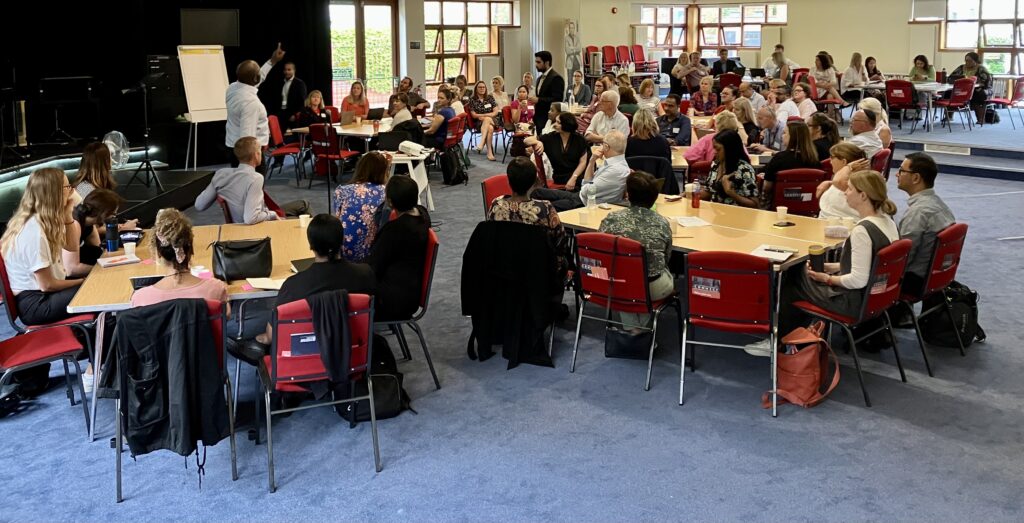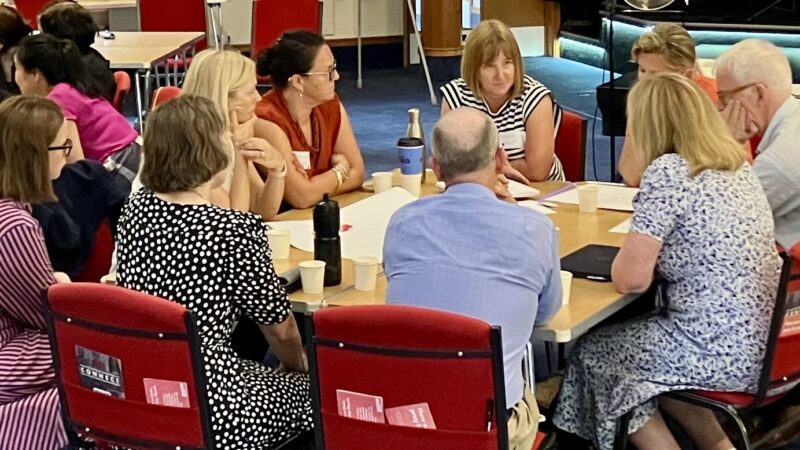
Leaders and frontline professionals across health, care and the voluntary sector came together to discuss and share learning from south west London’s virtual ward programme.
At the summit, NHS South West London’s clinical lead for virtual wards Dr Sayanthan Ganesaratnam talked about the excellent progress already made by teams across south west London.
He added: “We’ve got to keep reflecting, evolving and learning from what we do.”
After a series of presentations, attendees split into groups to discuss a range of topics from supporting hospital patient flow to workforce development and use of intravenous antibiotics to develop ideas for follow up.
Virtual wards allow patients to receive hospital-level care at home safely and in familiar surroundings, helping speed up people’s recovery while freeing up hospital capacity for patients that need them most.
We’ve got to keep reflecting, evolving and learning from what we do.
NHS South West London’s clinical lead for virtual wards Dr Sayanthan Ganesaratnam
The meeting highlighted that there are four virtual wards covering the six south west London boroughs with a central remote monitoring hub operating 24 hours a day.
GPs heard that at the end of May there were 327 beds available in south west London virtual wards – delivering care through a combination of tech and non-tech versions.
Between last November and April this year there were 3,278 admissions to virtual ward beds – roughly doubling in the space of a year – with the average length of stay being six days.
Patients seen on virtual wards would normally be admitted to an in-patient hospital bed.
About half of the patients on virtual wards were admitted directly from the community. About a quarter of patients were discharged from the acute hospital early and were able to continue their recovery at home while on a virtual ward.
Matthew Kershaw, Senior Responsible Officer for south west London’s virtual ward programme, told the meeting virtual wards continue to be a “big opportunity”.
He said: “We are all thinking of virtual wards as a way of improving services and reducing some the pressures on urgent and emergency care.
“If I was an 80-year-old lying in a hospital and didn’t need acute care at that time, I would be thinking I would be much better off being looked after at home with some support, in my own environment knowing that I’ve got people watching over me, engaging with me and providing me with support. I’d take that every day of the week.
“From a patient’s perspective, this is a really big opportunity and one that we don’t want to miss so sessions like this and future events are key to supporting our efforts to make virtual wards the transformation for the future that we all want them to be.”

